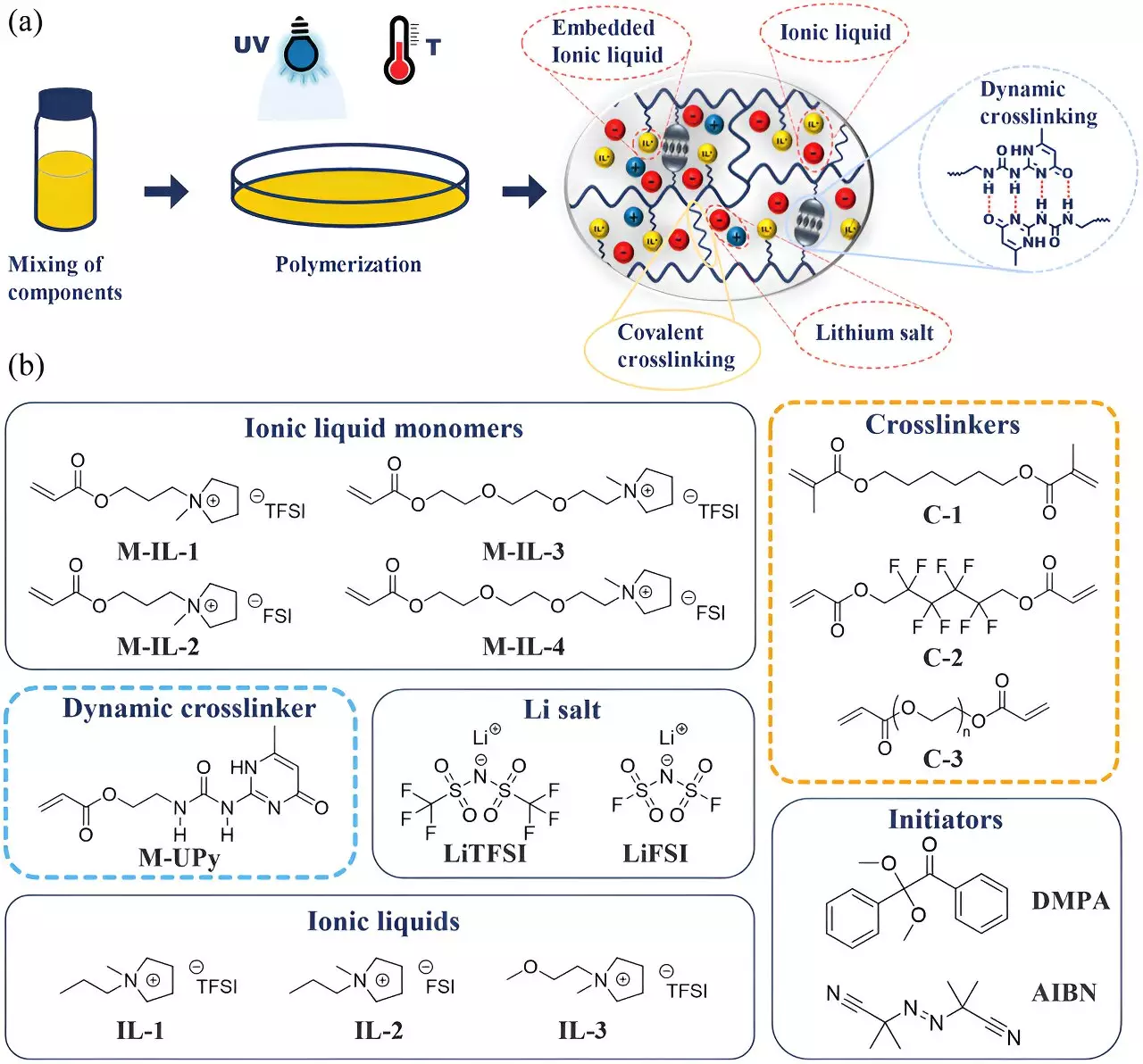The advancement of lithium-ion batteries has played a pivotal role in the evolution of portable electronics and electric vehicles, yet the quest for solutions that enhance their safety and longevity continues. Scientists at Martin Luther University Halle-Wittenberg (MLU) have recently introduced a groundbreaking gel that could redefine the future of energy storage. This innovative material not only reduces the risk of flammable electrolyte leaks but also enhances the overall performance and lifespan of lithium-ion batteries. With these developments published in the esteemed journal, Advanced Functional Materials, the implications for both consumer safety and technological efficacy are significant.
Understanding the Challenges of Lithium-Ion Batteries
Lithium-ion batteries are highly prized for their rapid charging capabilities and versatility across various applications. Nevertheless, their design poses inherent risks: the liquid electrolytes essential for ion transport are fraught with flammability issues, heightening the chances of fire or explosion upon damage. Professor Wolfgang Binder of MLU aptly encapsulates the dilemma, indicating that while these batteries are powerful, the volatile nature of their components necessitates stringent safety mechanisms. As researchers delve into this pressing issue, there emerges a critical need for innovations that can retain battery efficiency while mitigating the risks associated with traditional designs.
The Breakthrough: Gels with Enhanced Properties
The research team at MLU has addressed these concerns by developing a polymer-based gel capable of integrating with the battery cell architecture. Dr. Anja Marinow, a lead chemist on the project, explains that this gel maintains the essential ionic movement between electrodes while binding the liquid electrolyte, effectively creating a dual advantage: it combines the fluid conductivity typical of liquids with the resilience of solid polymers. This innovation not only holds the potential for safer batteries but also opens doors to improved performance metrics that could revolutionize battery technology.
Innovative Approaches to Battery Design
Historically, gel electrolytes have been employed in applications like starter batteries for motorcycles. However, their adaptation for lithium-ion technology remains largely uncharted. One of the key breakthroughs in this research lies in the integration of ionic scaffolding within the polymer’s structure. With this approach, it becomes possible to create a stable layer on the electrodes—an essential feature that conventional lithium-ion batteries rely upon during initial charging. Marinow emphasizes the importance of this foundational change in design, which addresses a significant gap in current battery technology.
According to Binder, the stability of conventional lithium-ion electrolytes is tested rigorously, particularly at voltage levels around 3.6 volts. The new gel electrolytes, however, showcase remarkable stability beyond 5 volts, opening up new possibilities for increased energy density and operational efficiency. This versatility highlights the gel’s capacity to not only function effectively in challenging conditions but also extend the overall lifespan of batteries, which is crucial as demand for reliable energy storage solutions escalates.
In an era marked by an urgent need for sustainable practices, the research conducted on these gels prioritizes recyclability. This focus ensures that, in instances of failure or at the battery’s end of life, our approach minimizes waste and environmental impact. As research progresses, a collaborative initiative titled “BAT4EVER” seeks to further these advancements, with participation from various academic and industrial partners across Europe. The ongoing establishment of the “European Center for Just Transition Research and Impact-Driven Transfer (JTC)” at MLU marks a serious commitment to not only enhancing battery technology but also addressing broader issues like the circular economy and social impact.
The strides made by chemists at Martin Luther University Halle-Wittenberg signify a turning point in the approach to lithium-ion battery design. By introducing this innovative gel technology, researchers are not only addressing immediate safety concerns but are also setting a pathway for future developments in energy storage. As we edge closer to commercial viability, the repercussions of this research extend far beyond just improved batteries, potentially transforming the landscape of portable power and sustainable practices in the industry.


Leave a Reply